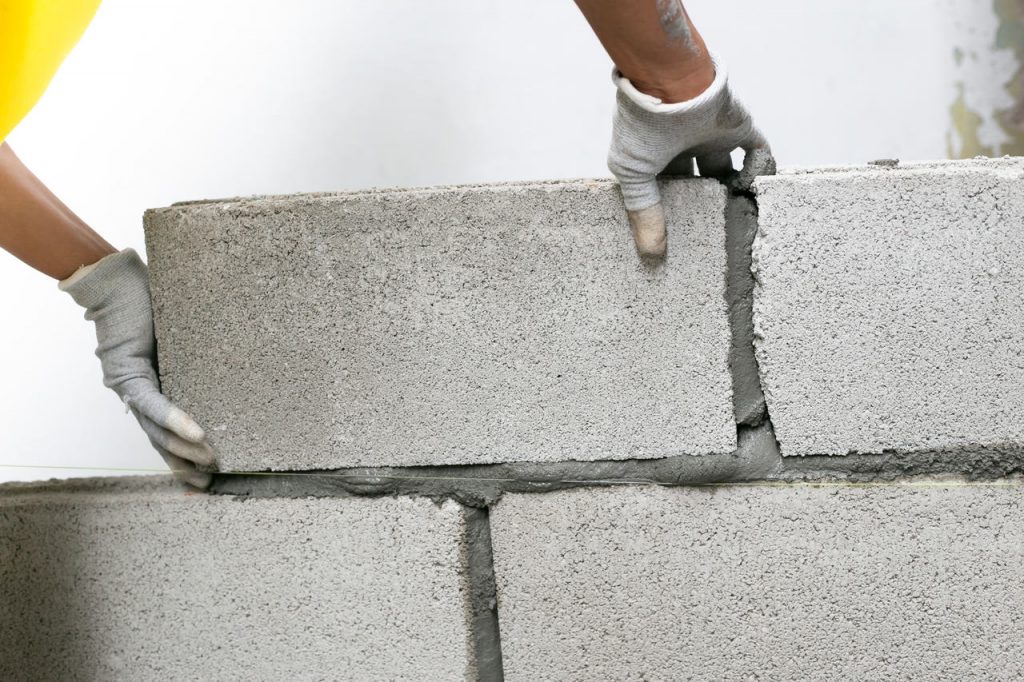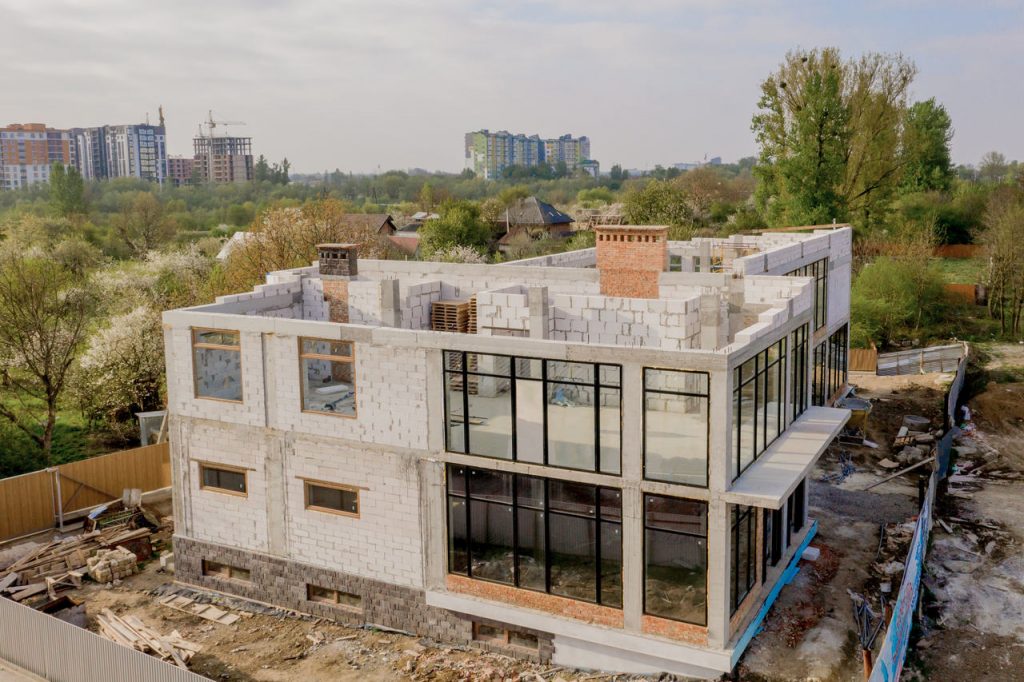Cellular concrete is one of the most popular materials for building walls. Which cellular concrete products are necessary for building a house?
Cellular concrete is a building material that uses quartz sand, water, and lime to make it. There are two types of cellular concrete: aerated concrete and foam concrete – they differ in the way air is introduced into the blocks.

They are available in widths from 20 to 48 cm. The most popular are 20 and 24 cm wide blocks – they are used for building load-bearing walls. The height of the blocks depends on the manufacturer. Available heights are:
Length of the blocks may vary from 49 up to 60,4 cm.
They are available in height 12 cm and width 24-42 cm. They are usually used in places where it is necessary to cut blocks.
Produced from class 600 cellular concrete, they are from 90-300 cm long. They come in two versions;
They are made of cellular concrete class 600, and are designed for making:
They are most often made of concrete class 600. They are used to build
In order to preserve the properties of cellular concrete, it is necessary to apply a thin layer of mortar. It is advisable to purchase the one intended for thin cellular concrete joints.
It is advisable to build single-layer walls from cellular concrete with a thin joint.
You do not need any sophisticated tools to build walls made of cellular concrete:
If concrete blocks are equipped with the tongue and groove system, vertical joints should not be made in them. The exception is the places where the elements touch smooth walls, e.g. in corners or after cutting the pieces.
There is a misconception that cellular concrete is not suitable for basement walls. Concrete blocks can be used for basement walls, but they must be made of top quality concrete without a tongue and groove system.
The first layer of the wall must be built with lime-cement mortar. After it has been laid, its level must be checked and, if necessary, levelled.
Joints on the walls cannot overlap – they have to be at least 10 cm apart. Cut pieces cannot be shorter than 15 cm.

In case of corners, direct the pieces with grooves to the outside.
In the sub-window zone it is necessary to provide reinforcement extending at least 0.5 m beyond the window opening. When making a reinforced concrete lintel, remember about proper insulation, because this is the place where very often a thermal bridge forms. That is why it is worth using lintel blocks for reinforcement, which do not require additional thermal insulation.
When making rims and columns it is worth using concrete shaped pieces that provide additional insulation of reinforced concrete elements.
For internal walls use blocks with higher density – thanks to that the rooms are better soundproofed.
If the walls are not covered with a roof before winter, the blocks should be protected with foil from the top.
On hot days before mortar application you should moisten blocks with water. It protects the mortar from drying out – dried out concrete absorbs water and as a result the mortar does not bind the blocks but dries out.
Cellular concrete blocks can differ from each other by 1 mm. Although it seems to be a small difference – after applying a few layers the difference is very visible and it is impossible to keep an ideal level. Therefore, the blocks must be gently levelled after each layer.
The first layer of concrete blocks must be perfectly straight, that is why mortar with a thickness of even several millimeters is used for its placement.
>> See also: What to build external walls of?
Window sills made of cellular concrete have to be additionally reinforced with reinforcement, because the corners may crack, and the reinforcement strengthens the durability of the structure.
Most walls made of cellular concrete blocks are built “on top of each other” without any additional reinforcements – this is a mistake, since such walls may lose their durability over time.